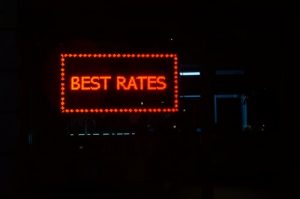Adjustable interest rates start low, but change over time, while fixed interest rates stay locked for the life of the loan. Prepare for larger payments if ARM rates are reset after the launch phase. Many home buyers tend to opt for traditional fixed-rate mortgages, often with terms of 15 or 30 years, but home loans are not for everyone. You may be able to get an even lower starting interest rate and a term that works best for you with a variable rate mortgage or ARM.
Comparing ARM and fixed-rate mortgages will help you choose the best mortgage for your current needs and future goals.
Interest on ARMs on fixed-rate mortgages
The biggest difference between ARM and fixed-rate mortgages is the way interest rates work. Fixed-rate loans have interest rates that never change. ARM rates are reset at certain intervals throughout the life of the loan. Variable-rate mortgages can be a powerful tool for home buyers with short term goals in mind, but they have their risks.
ARMs start with an interest rate set for a certain period of time, after which the interest rate is adjusted regularly. The key to knowing how an ARM adjusts is hidden in your name: An ARM 5/1 means that your rate is fixed over five years, then adjusted annually, for example. The most common ARM terms have initial fixed interest rates of three, five, seven, or ten years.
Although ARM interest rates are lower than fixed interest rates, it is still possible that they will be reset several times during the term of the loan, which will increase your mortgage payment.
Is an ARM or fixed-rate mortgage better?
If you are established in your career, have a growing family, or are ready to take root in a community you love, a 15 or 30-year fixed-rate mortgage may be right for you. With fixed fees, you always know how much your payment will be. And if interest rates drop a few years after your mortgage or house has gone up in value, you can always refinance another fixed-rate mortgage with a lower interest rate
Floating rate mortgages are more likely to attract first time buyers. “
Variable-rate mortgages, on the other hand, often attract first-time buyers because falling interest rates increase purchasing power. If you are advancing a career in which you may have to move in a few years, start a family, or simply keep your options open for the long term, an MRA may be a good option. You get a lower introductory price and the ability to move to a larger home before the fixed interest period expires.
Conclusion: ARM vs permanent
ARMs have a certain appeal, especially for owners who want lower down payments or flexibility of movement. You need to do the math to make sure your income can handle the higher monthly payments if rates go up after the introductory period. However, if interest rates stay low or even drop, adjustable-rate mortgages can potentially save a lot of money. Fixed-rate mortgages can be a better option for those who want to stay or who need reliable mortgage payments that never change. Fixed-rate mortgages: comments comparator
Adjustable interest rates appear low but change over time, while fixed interest rates stay locked for the duration of the loan. Prepare for larger payments if ARM rates are reset after the launch phase.
Many home buyers tend to opt for traditional fixed-rate mortgages, often with terms of 15 or 30 years, but home loans are not for everyone. You may be able to get an even lower starting interest rate and a term that works best for you with a variable rate mortgage or ARM.
Comparing ARM and fixed-rate mortgages lets you choose the best mortgage for your current needs and future goals.
Interest on ARMs on fixed-rate mortgages
The biggest difference between ARM and fixed-rate mortgages is the way the interest rates affected. Fixed-rate loans on interest rates that never change.



